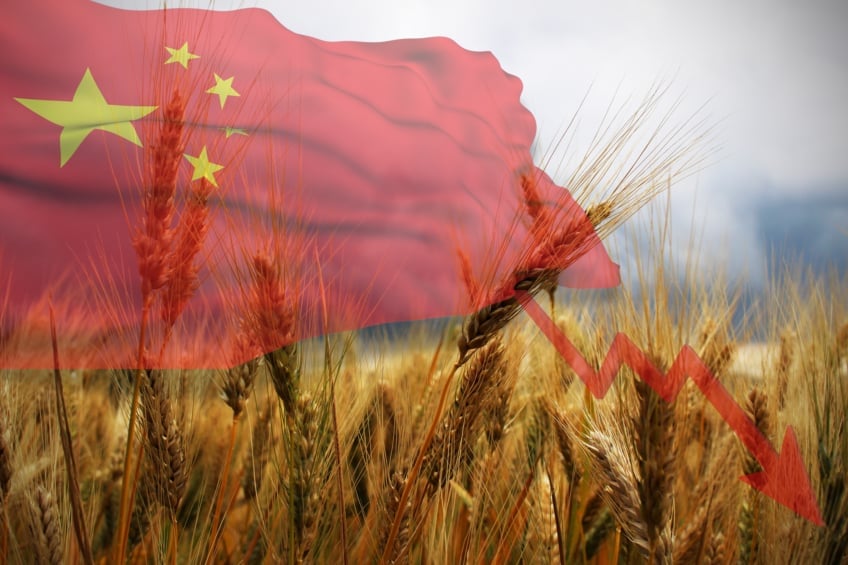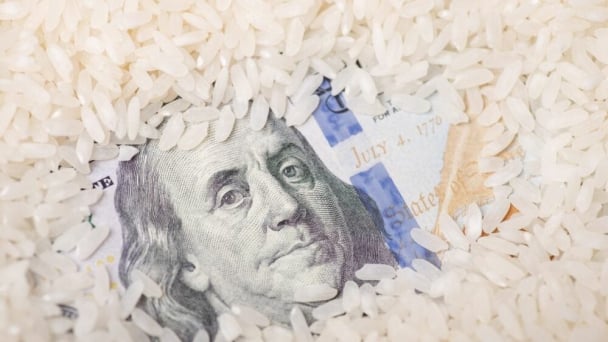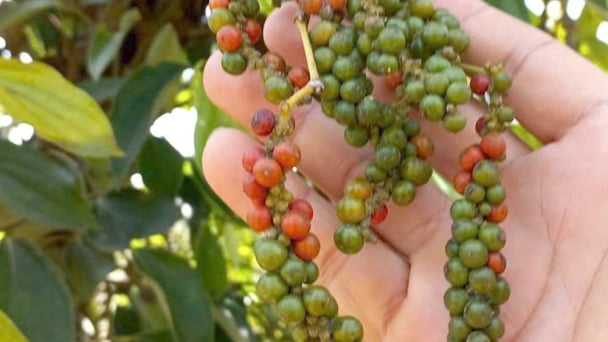April 26, 2025 | 09:20 GMT +7
April 26, 2025 | 09:20 GMT +7
Hotline: 0913.378.918
April 26, 2025 | 09:20 GMT +7
Hotline: 0913.378.918
That would mark the sharpest 1-year decline in decades, the USDA said.

Imports from China are plummeting. In March, the USDA had already lowered the forecast for Chinese wheat imports to 6.5 million wheat. Photo: Canva.
One of the main causes is declining imports by major wheat importing countries, including China and Pakistan. According to the USDA, domestic wheat production in these countries is increasing, reducing the need for imports.
Wheat imports from China are plummeting. In March, the USDA had already lowered the forecast for Chinese wheat imports to 6.5 million tonnes of wheat. In the April USDA forecast, Chinese imports fall even further to 3.5 million tonnes. That is 10 million tonnes less than last season when China imported 13.6 million tonnes of wheat. Countries that export wheat to China will notice this. According to the USDA, Australia in particular, for which China is an important export destination, is noticing this this season.
The trade war between the US and China is not specifically mentioned by the USDA, but the ministry’s forecast is based on the current trade policy with the associated high import tariffs that both countries apply. Last year, China was the 4th-largest export destination for US wheat by value. It then imported US$482 million worth of wheat from the US. The export forecast for US wheat has been lowered from the previous forecast.
Besides China, there are other things that limit world trade in wheat. For example, Turkey has introduced import restrictions due to high stocks in its own country. In addition, wheat harvests in the 2024/2025 season were smaller for top exporters such as Russia, the European Union and Ukraine, causing them to export less.
The export forecast for the EU has been further reduced. In March, the USDA still expected EU exports in the current season to be 27 million tonnes, but in the April forecast this has been adjusted downwards to 26.5 million tonnes. That is about 30% less compared to the previous season and the lowest level since 2018-’19.
The forecast for Ukrainian wheat exports has been revised and increased by almost 500,000 tonnes to 16 million tonnes. That is still considerably less than the previous season when Ukraine exported 18.6 million tonnes of wheat.
Russia is expected to export 44 million tonnes of wheat this 2024/25 season, compared to more than 55 million tonnes last season.
Global wheat production for 2024/25 has been revised downwards by the USDA, but is still at a record high. The forecast for wheat ending stocks has been increased from 260.1 to 260.7 million tonnes compared to the previous forecast. Nevertheless, this is still the smallest ending stock of wheat worldwide since 2015/16.
World trade in other grains is also declining. Total trade in grains (wheat, corn, barley, rice) is expected to be 7% smaller in the 2024/25 season than the previous season. Global corn production will be lower in the 2024/25 season, with the largest decline in the US, the largest exporting country.
On the other hand, just as with wheat, China’s own production is also increasing here. That country was the second largest importer of corn in 2023/24. USDA expects China to import 65% less corn.
(PW)

(VAN) Son La province is gradually addressing key challenges regarding issuance of planting area codes, improving the quality of packing facilities, and modernizing logistics infrastructure, to achieve the goal of formal and large-scale agricultural exports.

(VAN) Nations that export rice to the United States were among the hardest hit by new tariffs announced April 2, including the country’s top rice-trading partner: Thailand.

(VAN) Consumers look for indulgence, flavor, color, and crunch in yogurt, ice cream, and more.

(VAN) Russian poultry farmers have suffered losses in recent weeks from selling broiler meat and eggs to retailers and wholesalers as oversupply tightens its grip on the market.

(VAN) Pepper export businesses are boosting sales to the EU, India, the Middle East, and other markets to sustain exports, even in the face of unfavorable U.S. reciprocal tariffs.

(VAN) In northwestern Europe, poultry farmers can take full advantage of exceptionally high prices.